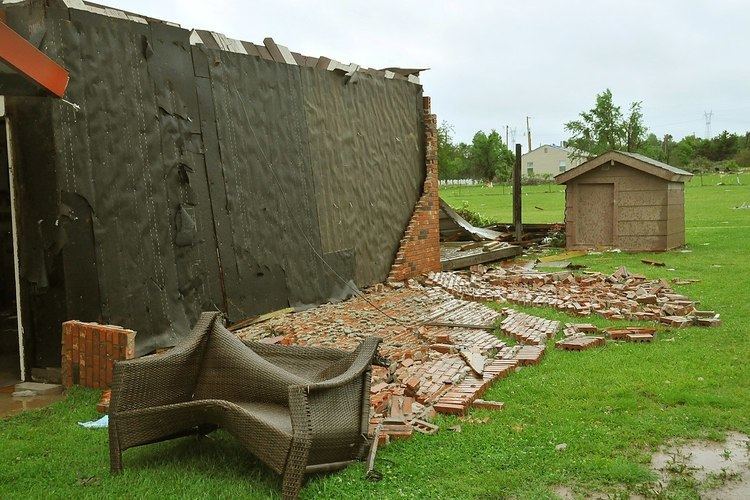 | ||
Masonry veneer walls consist of a single non-structural external layer of masonry work, typically brick, backed by an air space. The innermost element is usually structural wall, and may consist of wood or metal frame within the Cavity wall (where inner and outer layers are both structural) while others are distinct to masonry veneer walls:
Contents
Support
Because the masonry veneer is non-structural, it must be tied back to the building structure to prevent movement under wind and earthquake loads. This is usually accomplished by a means that does not interrupt the drainage plane and does not compromise cavity insulation. Brick ties are used for this purpose, and may take the form of corrugated metal straps nailed or screwed to the structural framing, or as wire extensions to horizontal joint reinforcement in a fully masonry veneer system. Although the veneer is vertically self-supporting, shelf angles are often used in multi-story buildings, typically at floor edges, to provide a horizontal expansion joint that allows expansion of the brick and potential shrinkage of the frame. In multi-story buildings, such a system may be called a curtain wall.
Materials
Masonry veneers can be made of any concrete, manufactured clay, artificial stone or natural stone product. Typically, masonry refers to individual units that are placed in a mortar bed, making a distinction with panelized products.
If a masonry veneer is used over a framed wall, sheathing and a moisture barrier are required to assure the weather tightness of the assembly.
Rain screens
A variant on masonry veneer is the rain screen veneer. Rain screens are ventilated at the top and bottom of the cavity to prevent wind-driven rain from being driven into the building by unbalanced pressure. Such systems are typically encountered in areas where blowing rain is a significant concern.
Thermal performance
Masonry has high thermal mass, so masonry is slower to heat up, and can continue to release heat long into the night; without insulation half of that heat will be released into the building. Masonry with a dark external surface absorbs more heat than with a lighter external surface, especially if exposed to sunlight. Reverse masonry veneer walls have the brickwork inside and the lightweight frame and cladding outside; this has the advantage of providing the thermal mass on the inside of a building.
Masonry itself provides very little insulation, however:
Different configurations of such foil(s), air-space(s), and/or insulating material(s) can perform significantly better at excluding heat during summer and/or retaining heat during winter; these configurations often perform in counter-intuitive ways. Because of the enormous long-term potential for reducing energy requirements and improving occupant comfort, building designers should consult engineers or adopt configurations with known performances.
